100 Hours: My Ultimate Istanbul Itinerary
They said my Istanbul itinerary wasn’t going to be worth it. With just 100 hours between arriving and flying off, how was I going to enjoy everything Turkey had to offer? I would miss out the fairy chimneys and other things to do in Cappadocia, the travertine terraces of Pamukkale, the ruins of Ephesus (Efes) and more.
But, hey, when some of the stones have witnessed the rise and fall of the Byzantine and Ottoman Empires, there’s no shame in spending more time in the former capital. After five days in Istanbul, I can only say I’ve scratched the surface, yet most people spend only a couple of nights in transit. Now, this is what you might be missing out on.
My Istanbul itinerary: What I saw and ate in 100 hours
Here’s a quick intro to what Istanbul looks like. I think of the city as being divided into three main parts: Down the middle by the Bosphorus Strait. On the European (western) side, the Golden Horn separates the old city (Fatih, formerly Constantinople) in the south from Beyoğlu (which includes Taksim Square and Karaköy/Galata) in the north. Kadiköy (which includes the former Chalcedon) is on the southern part of the Asian side. Ferries and the metro system connect all three to one another, but an over-water bridge does not exist between the old city and Kadiköy. A tram system also operates between Karaköy and the old city, and the latter and the districts west of it.
If you’re wondering where to stay in Istanbul, picking somewhere near Sultanahmet Square or Taksim Square ensures you won’t have to travel far to/from the airport shuttle. As for me, I picked the Metropolis Guesthouse. While there were no lifts, the dorm was clean and the rooftop terrace offered a great view of the sea while I enjoyed a homemade Turkish breakfast.
Here is a map of the places covered in this post:
Day 1: Arrival, Kadiköy and crossing the Bosphorus
After a stopover in Dubai, I landed on the Asian side of Istanbul at Sahiba Gökçen Airport. When I booked my flight, it was cheaper to do so. It’s relatively small and definitely not glitzy by any stretch of the imagination. From the airport, you can take a Havabus Shuttle to Kadiköy or Taksim Square in Karaköy, and it costs 14 TL. E-11 is a longer but cheaper public bus option and both stop at the ferry terminals where I began my exploration. Get an Istanbulkart for use on all public transport, including the ferries and Havabus, but be judicious with the amount you top up because there are no refunds.
Once I headed into the Kadiköy fish market in the late afternoon, it was impossible to avoid stuffing myself despite the jet lag. I ordered midye tava (fried mussels with tarator dip) and balik ekmek (grilled fish sandwich) from one hole-in-the-wall called Marmara, then a plate of midye dolma (mussels stuffed with rice) and a korkoreç (grilled spicy lamb tripe) from a chain, then my first künefe (fine pastry threads in cheese, nuts and syrup) in the city with a side of dondurma (ice-cream made with mastic gum). These were some of the best things to eat in Istanbul and it was only Day 1!
Since I was staying in the old city, I took the ferry to Eminönü. The 20-minute ride on the water offered the best views of Istanbul as daylight faded behind the domes and the minarets. Don’t forget to look back on the Asian side, though. It was a pity that Kiz Kulesi (Maiden’s Tower) was expensive to visit and the German-built Haydarpaşa train station was under renovation.
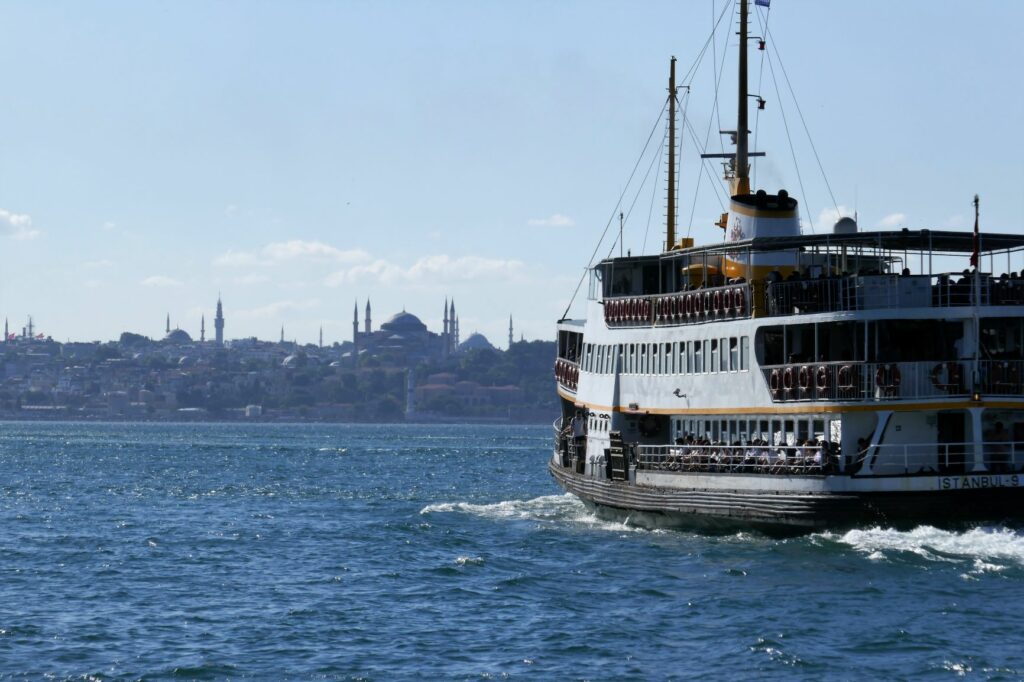
Day 2, Part 1: Sultanahmet and Hagia Sophia
Now we begin to talk about the top things to do in Istanbul for art and history lovers. I recommend waking up extra early to beat the crowds and take your time on the slopes. To begin, you can visit the Sultan Ahmet mosque for free practically any time outside prayer times–just say you’re there to pray and put your phone and camera away. It’s also known as the Blue Mosque for the blue Iznik tiles used in the ceiling of the dome. I did that but didn’t stay long due to the scaffolding that obstructed many of the views of the interior.
Hagia Sophia, about 200 metres away, was next. There was already a queue outside even before the gates opened. If you have a Museum Pass, though, take the shorter separate queue. I used the 15 minutes I had before the opening time to buy one online and I was able to walk straight to the security check. It used to be worth it when it was cheaper but I’d now recommend buying the e-ticket instead.
Hagia Sophia, also known as Aya Sofia, was the largest building in the world when its current iteration was completed in 537. The Byzantine church was converted to a mosque after the Ottoman conquest of 1453. Some of the exquisite mosaics from its previous guise survived under the whitewash and, now that the complex is a museum, they can be seen in situ. Take your time to find them in the upper gallery and over the doors that you pass through.
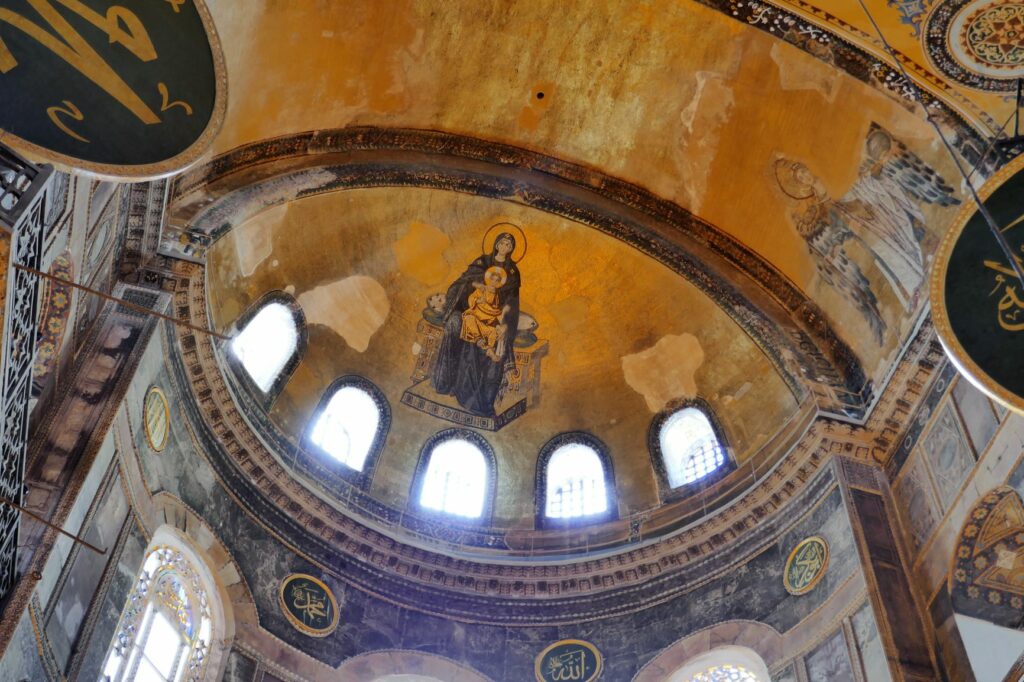
The crowds built up quickly by 10.30 a.m. and that was my cue to head to the Basilica Cistern. Note that the Museum Pass doesn’t cover the entrance fee here. It’s not a basilica but an ancient underground water storage system propped up by row upon row of columns of different styles. There were people taking pictures of the dimly lit columns reflected in the water for the ‘Gram, but I wasn’t one of them. See if you can spot the Medusa heads that form the bases of two of the columns.
Fancy an early lunch? I immensely enjoyed the grilled beef, chicken and lamb kofte (meatballs) at Tarihi with the smoky grilled chilli. Take them away in a sandwich if you’re on a budget. The famous Pudding Shop is next door but, beyond its past significance as a hippie stop, it’s not a big deal.
After my meal, I headed back to the Arasta bazaar beneath the Blue Mosque. As you criss-cross Sultanahmet, you can take note of the following without visiting them:
- The old Hippodrome with its Egyptian obelisk and serpent column
- The German fountain is a source of free, cool but very chlorinated drinking water
- Sultan Ahmet’s mausoleum
- The Hurren Sultan hamam, built by Suleyman the Magnificent’s consort
Within the bazaar is the entrance to the Museum of the Great Palace Mosaics. When you look down on the images of nature and of men wrestling with beasts, you’re looking at the floors of Emperor Constantine’s palace. These form only a fraction and the rest are sadly under the Arasta Bazaar and the Blue Mosque.
Day 2, Part 2: Chora Museum and the Byzantine Wall
From Sultanahmet, I took the tram and a bus to my next destination, the Kariye Mosque or the Chora Museum, for even more mosaics and frescoes in a church-turned-mosque. These are some of the richest and best-preserved images and feature different Biblical and dedication scenes. Google takes you on a roundabout route from Edirnekapi stop to the entrance; as see as you reach Kariye Park, you can turn right and see the hoardings that currently cover the exterior.
Since I’d come this far, I also visited the newly opened Palace of the Porphyrogenitus. It’s one of the more unusual places to visit in Istanbul. To find it, when you leave Chora Museum, head straight for the Byzantine wall, turn right and follow it for five minutes. The palace was built into the walls and left in ruins for a long time; now, it’s a museum about the royal pottery that once occupied the site.
By then, I was shattered from the walking and you probably would be as well. As I returned to Sultanahmet, I was in time to watch Dervish-inspired performances from outside a couple of restaurants.
Day 3: Topkapi Palace and Spice Bazaar
It’s another early start to see one of the most famous Istanbul attractions, Topkapi Palace. Before the gates open, take a walk around Gülhane Park behind the palace to see Constantine’s column that commemorates his victory over the Goths. Dating from the 4th Century, it’s the oldest Roman monument in the city. The entrance to the park is to the north of Hagia Sophia.
The Palace itself features exhibits of jewellery, swords, firearms and relics. I did think, though, that the imperial architecture was more interesting. The Museum Pass included admission to the harem. There’s nothing risque about it but the tilework was gorgeous. At the rear of the palace, among the mediaeval kiosks, is a grand view of the Bosphorus Strait.
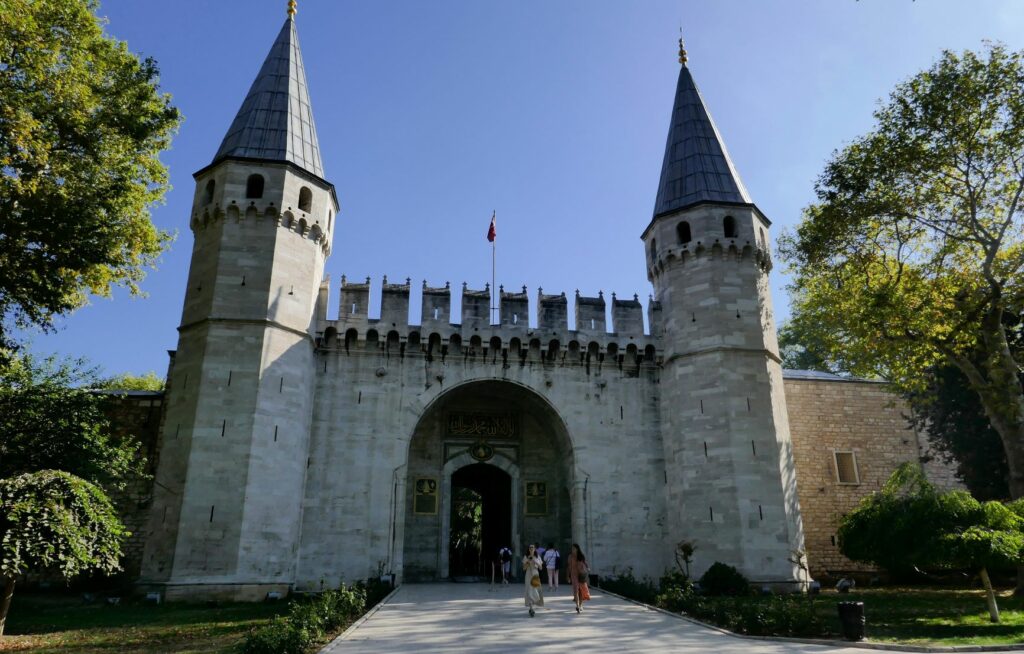
Also within the wider Topkapi Palace grounds are the Hagia Eirene and the Istanbul Archaeology Museums. For a church that predates Hagia Sophia, and served as the venue for Christianity’s second Ecumenical Council were held, it receives relatively little attention. As for the Archaeology Museums, most of them are currently undergoing renovation but exhibits of Istanbul’s history and collections from other parts of the Eastern Roman Empire are still on show. The sarcophagi in the courtyard are apparently from Hagia Sophia and it’s a shame that they not labelled. There are also other remnants of the Great Palace, such as columns and statues.
After the information overload, I took the tram to Eminönü and took a walk around the Spice Bazaar. It is full of stalls selling lokum (Turkish delight), coffee, herbal teas, perfume oils and, yes, spices. There is little variation outside of this selection but the items make excellent gifts. If you see no price labels, bargain. Outside the bazaar, there is a never-ending queue for freshly ground coffee at Mehmet Effendi. In terms of food, stuff your face at Balkan Lokantasi and enjoy all kinds of baklava at Hafiz Mustafa.
If you make it that far, the Sirkeci train station also has a hall exhibiting its history and some old equipment, though it’s mostly in Turkish. After all, this was the terminus for the London-Istanbul Orient Express service. The admission fee to the evening whirling Dervish performance is on the steep side, in my opinion; see the Mevlevi House Museum later in this Istanbul itinerary for an alternative.
Day 4: Süleymaniye Mosque, Grand Bazaar and Taksim Square
Take it a little easier this morning; enjoy coffee, tea, pastries and menemen (scrambled eggs and tomatoes) at Cigdem Patisserie. If you choose to make the steep climb to the Süleymaniye Mosque (as I did), you will need the energy. From the terrace, the view of Karaköy is magnificent, and the interior of the mosque is elegant in its simplicity. The Sultan and his consort are buried in the mausoleums behind the mosque. Do note that there are both paid and free public toilets here, so pay attention to the signs.
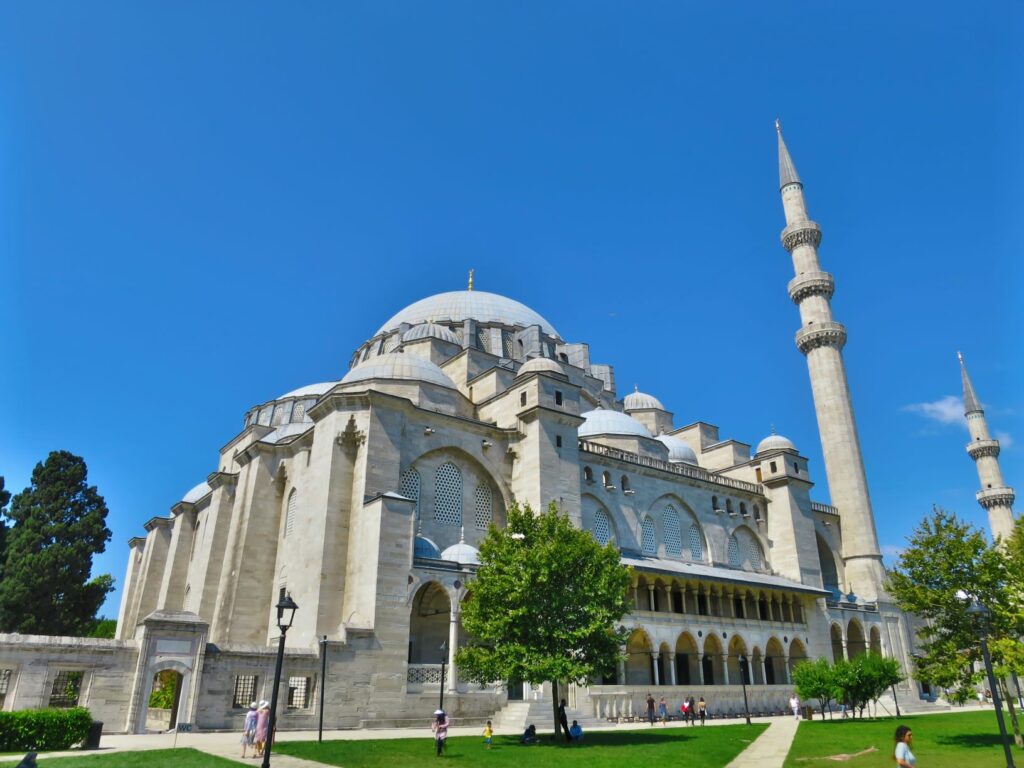
On your way back to Sultanahmet, it’s an easy walk to the Grand Bazaar. It is as enormous as the name suggests, and with so many different sections, it is very easy to get lost in. Download a walking route so that you can find your way to the most significant parts, such as the original bazaar. A word about Turkish traders: they may seem very friendly but unlike Iranian or Omani shopkeepers, they won’t let you go without a purchase so easily!
The southern end of the Grand Bazaar is close to the recently opened Cistern of Theodosius (Şerefiye Sarnıcı). It’s free, well-lit, pleasantly uncrowded and features contemporary artwork among the columns. I can’t say the same about the Cistern of Philoxenos (Binbirdirek Sarnıcı), so skip that and save 20 TL.
In the evening, head to Taksim Square and enjoy the nightlife there or in Karaköy, especially on Saturday. A few blocks away is the Dürümzade kebab stall that the late Anthony Bourdain made famous. Portions are generous and the chicken wings and grilled meats are to die for. And despite Turks being mostly Muslims, the bars are not just packed with expatriate and tourist unbelievers. ;) I haven’t mentioned evening activities before this but there are plenty of things to do in Istanbul at night for the owls among us.
Day 5: Karaköy and departure
Even if you’re not staying on this side of the Golden Horn, it’s definitely worth returning to explore Karaköy’s historic districts. Bank Street features a row of Art Deco buildings built by Jewish merchants and the popular, intriguingly designed Kamondo staircase.
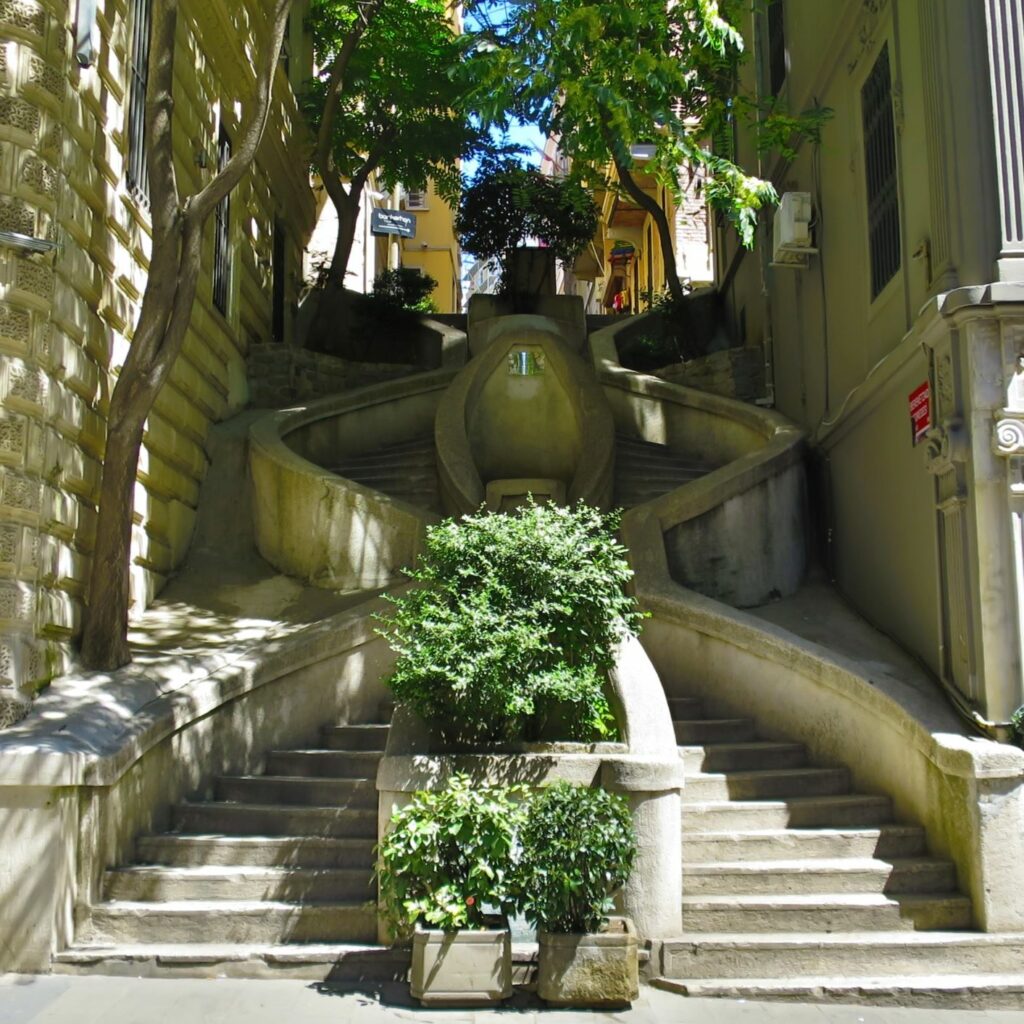
I did not climb the Galata Tower but you may want to get another view of Istanbul from the top of this ancient Genoese-built structure. More interesting is the Galata Mevlevi House Museum, where there are plenty of exhibits about Sufism. It’s also included in the Museum Pass. I would’ve booked and stayed for the performance if my flight wasn’t so early, so I consoled myself with another baklava with clotted cream from Karaköy Güllüoğlu.
My 100 hours in Istanbul were up at the point my early evening flight took off from the new Istanbul Airport. Even with this much time in one city, there were still several activities and sights that I left out:
Things to do that I left out of my Istanbul itinerary
- Cruising the Bosphorus Strait
- Üsküdar (including the Palace)
- Visiting the Princes Islands
- Dolmabahçe Palace
- A Turkish bath
- Minaturk (one of the very few things to do in Istanbul with kids that will keep them engaged)
When to go to Istanbul
Weather and seasons
Summer in Istanbul is hot; while the heat is manageable in the shade and temperatures drop significantly at night, the sun is intense. It’s also peak travel season for Europeans. Winters are bitterly cold, no thanks to the wind. Shoulder season is what you’d want to aim for.
Holidays
You need to also consider religious holidays. Istanbul is at its most crowded around Eid ul Fitr, the festival of sacrifice. People who live in other parts of the Middle East usually take extended vacations around this time and Turkey is a popular destination. That said, you will see plenty of local families greeting one another in Sultanahmet on Eid morning, well before the tourists flood the area.
Roman Mosaics - The Best 28 Places for Stunning Mosaics
21/12/2020 @ 4:04 AM
[…] association with the Byzantine emperors, makes it worth a stop, and you can devote an hour of your Istanbul itinerary to […]